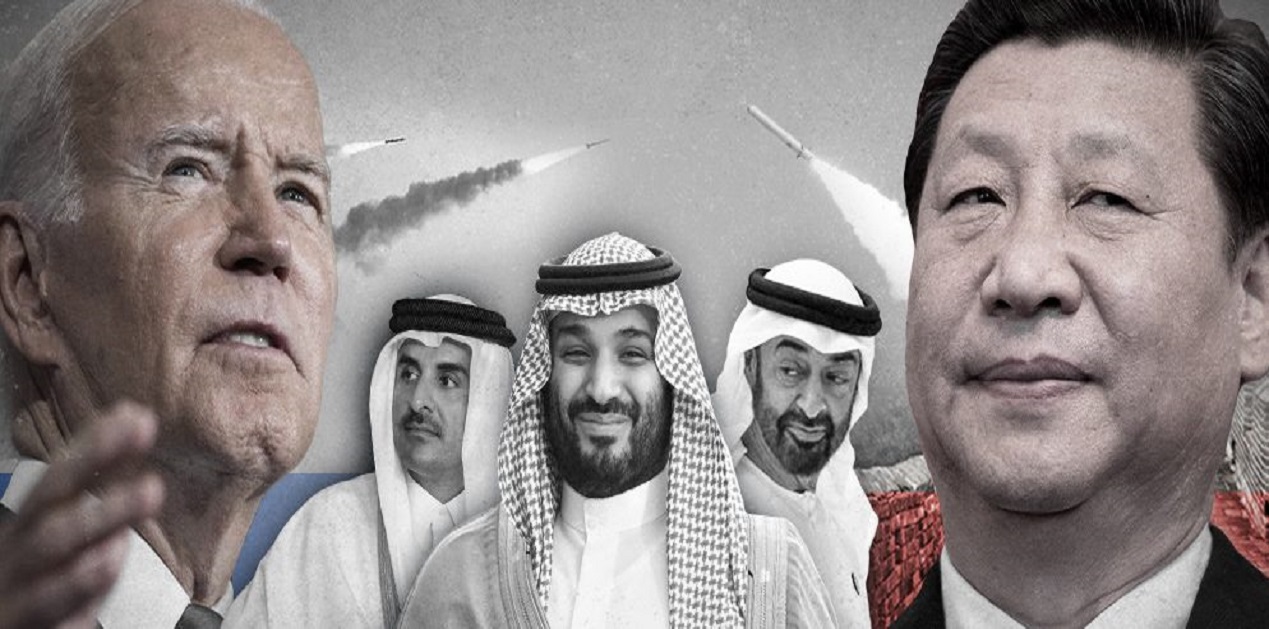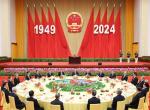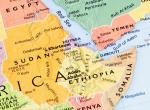The geopolitical sand dunes in West Asia are known to shift suddenly. However, major regional developments in recent times point to certain fundamental shifts, which may have significant long-term implications.
The first among such important changes is the virtual collapse of the petrodollar system, which formed the basis of US-Saudi relations for nearly half a century.
It was in 1971 that President Richard Nixon terminated the convertibility of the US dollar to gold, as established in the 1944 Bretton Woods Agreement, and turned the US dollar into a fiat, free-floating currency.[1] The ensuing economic uncertainty was worsened by the October 1973 “oil shock”, when Saudi King Shah Faisal – who then led the Organization of Arab Petroleum Exporting Countries (OAPEC) — imposed an oil embargo on the US for supporting Israel during the 1973 Yom Kippur War.[2]
Foundering of the Petrodollar System
As the value of the US dollar plunged, Washington decided to hold negotiations with Saudi Arabia. The talks culminated in the 1974 agreement which ushered in the petrodollar system, wherein the oil blockade was lifted and petroleum virtually replaced gold as the commodity backing the US dollar and strengthened it as the predominant global currency.[3]
In the agreement, the US government promised to provide military security and increased economic aid to Saudi Arabia in lieu of Riyadh exclusively pricing all of its exported oil in US dollars. This forced countries around the world to keep large US dollar reserves, consolidating status of the greenback as the world’s reserve currency. Soon other Arab Gulf states also joined in the agreement and benefitted from the military security and economic benefits by accepting the agreement and trading oil in the US dollar.[4]
Thus, the petrodollar system became the pillar for strong US-Gulf Arab relations, even though America often faced severe criticism from liberal quarters for supporting pre-modern Gulf Arab dynasties that ran contrary to values of the American Revolution.
The US embarrassment for supporting Gulf Arab monarchies for oil peaked following the 9/11 attacks, in which 15 of the 19 hijackers were Saudi citizens, while two were from the UAE.[5] In his 2006 State of the Union address, former US President George Bush admitted “America is addicted to oil” and set a goal of replacing 75 percent of the nation's oil imports from West Asia by 2025.[6] To this end, President Bush started issuing permits for oil drilling and lifted ban on offshore drilling. With the rise in US oil production, particularly shale oil that benefitted from the technique of fracking, America today is not only the world’s largest producer of oil but will become net exporter of crude oil by the end of 2023.[7]
China’s Dragon in West Asia’s Shadow
Thus, President Bush himself initiated the gradual exit of the US from the toxic relationship with Gulf Arab states established under the 1974 Agreement. In fact, the US has today freed itself from West Asian oil well before its 2025 deadline.
However, China emerged as perhaps the greatest beneficiary from the US wars in Afghanistan and West Asia in the 2000s, even more than Iran, GCC and Russia, as its meteoric rise as an economic and military power post-9/11 was at the expense of the US preoccupation in West Asia and faced little resistance.[8]
Having learnt a valuable lesson from the Asia economic crisis of 1998 of not parking its rising export revenues in its own banks to avoid a savings glut in its financial system that caused asset bubbles in the economy, China decided to buy US debt (mainly in US treasuries) and re-invested it in US banks, according to former Governor of the US Federal Reserve Ben Bernanke.[9]
This provided the US with enough credit to keep funding its expensive wars in West Asia and Afghanistan, in addition to creating bubbles in the US economy that led to a subprime mortgage crisis and the 2008 financial meltdown. This ploy of reinvesting revenues in US banks also helped China in keeping the value of renminbi low against the dollar, which led to sustained rise in its exports.
The US eventually realised that the Afghan and West Asian quagmire was preventing it from directing its energies towards the real challengers to its superpower status in resurgent China and Russia and this is reflected in the 2012 “Pivot to East Asia” strategy of the Obama administration.[10]
The Arab Pivot to China
However, US allies in West Asia — Sunni Arab states and Israel — resent American military pivoting to East Asia and leaving them in the lurch to contend with the rising Shiite Crescent in their neighbourhood.
After neutralising the top brass of ISIS leadership and its territories in Syria and Iraq in 2019, US forces started drawing down forces and removing Patriot anti-missile system and anti-rocket THAAD batteries from West Asia, at a time when Houthi rebels were releasing a barrage of drone and missile attacks on Saudi Arabia, with the most prominent being the 2019 Abqaiq-Khuraiz drone attack on Saudi oil installations.[11] These events proved that the 1974 petrodollar agreement had virtually ended as the US was reneging on its word to provide security to Saudi Arabia and Gulf States, for it no longer needed oil from the region.
To somehow placate any sense of betrayal among Arab allies, the Trump administration pushed Gulf States to forge Abraham Accords with Israel in 2020, making it a front against a belligerent Iran and neo-Ottoman Turkey.
However, the continuing Israel-Palestinian conflict in 2021, 2022 and this year makes it difficult for Sunni Arab kingdoms to present Israel as a security provider to their masses.[12]
The lifting of US security cover from Gulf Arab countries has thus forced the latter to grow closer to China and Russia, the very countries US military is trying to reposition towards.
If the US does not need oil from the Gulf anymore, China does as it imports nearly 40 percent of its oil from West Asia.[13] In addition, China does not come with the West’s usual concern over human rights and democracy in Gulf States, which further sweetens this new-found alignment.
China’s Security Architecture for West Asia
In addition, China seems willing to substitute the US as a security provider for GCC states in lieu of the latter’s oil wealth. In his address to the First China-GCC summit held in Riyadh late last year, Chinese President Xi Jinping told Gulf States that “China will firmly support GCC countries in safeguarding their security, and support the efforts by regional countries to resolve differences through dialogue and consultation and to build Gulf collective security architecture”.[14]
Then in February this year, China released its Global Security Initiative (GSI) Concept Paper where it makes special mention of West Asia and states: “China will Implement the five-point proposal on realizing peace and stability in the Middle East, including advocating mutual respect, upholding equity and justice, realizing non-proliferation, jointly fostering collective security, and accelerating development cooperation, so as to jointly establish a new security framework in the Middle East.”[15]
The international media thought China was merely making a PR pitch towards countries in West Asia, but on 10 March 2023, China claimed that it had brought regional arch-rivals Saudi Arabia and Iran closer, as they decided to re-establish their diplomatic relations after a period of seven years. This has been followed by foreign minister of Saudi Arabia visiting Iran recently.
Close on the heels of this development came the astonishing news in early May that the Allawi Shiite regime of Bashar Al-Assad (condemned as “the Butcher of Damascus” by many Arab states) was returning to the fold of the largely Sunni Arab League after over a decade. As it turned out, President Bashar Al Assad personally attended the Arab League’s Riyadh summit on 19 May 2023 and almost simultaneously, Saudi Arabia restored ties with the Syrian regime, on the obvious backing of the Russia-China patronage. Thus, the China security architecture under its theoretical Global Security Initiative showed its first practical manifestation in West Asia of all regions.
It is also noteworthy that in the military sphere, Russia, China and Iran conducted a naval exercise in the Gulf of Oman in mid-March, under the name ‘Maritime Security Belt 2023’.[16] Chinese participation in this naval exercise was reported to be its largest ever in the Gulf. This was followed by the UAE Foreign Ministry declaration on 31 May 2023 that the country had already withdrawn from the 34-nation US-led Combined Maritime Forces, which currently operates in Gulf waters and the Red Sea. The phraseology of the UAE Foreign Ministry statement on its website was quite baffling: “As a result of our ongoing evaluation of effective security cooperation with all partners, the UAE withdrew its participation in the Combined Maritime Forces two months ago.”[17]
Iran’s New Naval Alliance?
This declaration was topped by an equally shocking claim by Iranian navy commander Shahram Irani on 3 June 2023, wherein he claimed that Iran and Saudi Arabia, along with other countries —including UAE, Bahrain, Qatar, Iraq, etc. — planned to form a joint naval force. Iranian commander then added: “The countries of the region have today realized that only cooperation with each other brings security to the area.”[18]
Many commentators have since doubted Iranian claims, as the GCC bloc strongly disagree with Iran on the very name of the Persian Gulf (and call it Arabian Gulf)[19] and strongly opposes Iran’s allegedly illegal occupation of three UAE islands there.[20] With such deep-seated differences how could GCC vessels ever navigate contentious waters alongside Iranian navy. But the strange thing is that while none of the GCC countries named by Iran to be partners in this alliance have neither accepted nor more importantly denied Iranian claims of a naval alliance.
Conclusion: Threat of Israel-Iran Showdown
For a long time, the US had complained about China’s “free riding” on the public goods provided by the US security umbrella over West Asia, but it seems China has suddenly stepped on the accelerator at the expense of US interests.[21]
Following the apparent US drawdown of forces from the Gulf, Iran is behaving as the new hegemon with Arab Sunni monarchies finally accepting it not only as a regional player but even capitulating to its rising influence. The Gulf States even want to join the China-Russia blocs, namely the BRICS and the Shanghai Cooperation Organization (SCO).
Meanwhile, both Iran and Israel are showing increasing signs of internal weakness, with rising instances of public unrest, which might make the beleaguered governments to opt for war as a distraction.
Although China would not want a new war in West Asia as that might hurt its energy interests, it might be interested in reopening the region as a new front for the US military by propping up a more bellicose Iran against Israel and thereby pulling US back to West Asia and away from China’s immediate neighbourhood.
In this melee, India should not be too concerned about China’s seeming emergence as a major extra-regional player in West Asia as such a move comes with its own set of unforeseen hazards. India should rather continue with its de-hyphenated diplomatic approach and make contingency plans for securing its vital interests and for evacuating its expat population in case of an Israel-Iran war, which remains a simmering prospect.
References
[1]Barry Eichengreen, Exorbitant Privilege: The Rise and Fall of the Dollar, Oxford University Press, 2012
[2]Price-Smith and T. Andrew. "1. The History of Oil in International Affairs". Oil, Illiberalism, and War: An Analysis of Energy and US Foreign Policy. The MIT Press, 2015
[3]Andrea Wong, “The Untold Story Behind Saudi Arabia’s 41-Year U.S. Debt Secret”, Bloomberg, 31 May 2016
[4]Ava Vered Zieff, “The U.S. Shale Revolution: The Threat to Saudi Arabia and the The U.S. Shale Revolution: The Threat to Saudi Arabia and the Future of the U.S.-Saudi "Special Relationship" Future of the U.S.-Saudi ‘Special Relationship’", Fordham Research Commons, Fordham University, 2022.
[5]The 9/11 Commission Report" (PDF). www.9-11commission.gov. Archived (PDF) from the original
[6]Elizabeth Bumiller and Adam Nagourney, ‘Bush: America is Addicted to Oil,” New York Times, 01 February 2006
[7] ‘U.S. on track to becoming a net oil exporter in 2023’, 10/12 Industry Report Staff, 22 December 2022
[8]Minxin Pei, ‘George W. Bush’s disastrous Iraq war paved the way for China’s rise. Is Trump about to make the same mistake?’, South China Morning Post, 10 January 2020
[9]Remarks by Governor Ben S. Bernanke, ‘The Global Saving Glut and the U.S. Current Account Deficit’, The Federal Reserve Board, 10 March 2005
[10]Renato Castro, ‘The Obama Administration's Strategic Pivot to Asia: From a Diplomatic to a Strategic Constrainment of an Emergent China?; Korean Journal of Defense Analysis, 2013
[11]‘US Pulls Missile Defenses in Saudi Arabia Amid Yemen Attacks’, Associated Press, 11 September 2021
[12]Ben Lynfield, ‘Two Years Later, Abraham Accords are Losing their Lustre’, Foreign Policy, 23 September 2022
[13] ‘Asia region is most dependent on Middle East crude oil, LNG supplies’, Reuters, 8 January 2020
[14]“Full Text of Xi Jinping's Keynote Speech at China-GCC Summit”, China Daily, 10 December 2022.
[15]“The Global Security Initiative Concept Paper”, Ministry of Foreign Affairs of the People’s Republic of China, 21 February 2023
[16]“China, Russia, Iran hold joint naval drills in Gulf of Oman”, Indian Express, 15 March 2023
[17]Arwa Ibrahim, “UAE withdraws from US-led maritime coalition”, Al-Jazeera, 31 May 2023
[18]“Iran says to form naval alliance with Gulf States to ensure regional stability”, Reuters, 3 June 2023
[19]Bosworth and C. Edmund "The Nomenclature of the Persian Gulf". In Cottrell, Alvin J. (ed.). The Persian Gulf States: A General Survey. Baltimore, Maryland: Johns Hopkins University Press. pp. xvii–xxxvi, 1980
[20] Thomas Mattair, The Three Occupied UAE Islands: The Tunbs and Abu Musa. The Emirates Center for Strategic Studies and Research, July 1995
[21]Andrew Kennedy “China and the Free-Rider Problem: Exploring the Case of Energy Security”, Political Science Quarterly, 130(1), Spring 2015, pp. 27-50.
(The paper is the author’s individual scholastic articulation. The author certifies that the article/paper is original in content, unpublished and it has not been submitted for publication/web upload elsewhere, and that the facts and figures quoted are duly referenced, as needed, and are believed to be correct). (The paper does not necessarily represent the organisational stance... More >>
Image Source: https://chanakyaforum.com/wp-content/uploads/2023/03/West-Asia-China-vsUSA-e1678708184117.jpg










Post new comment